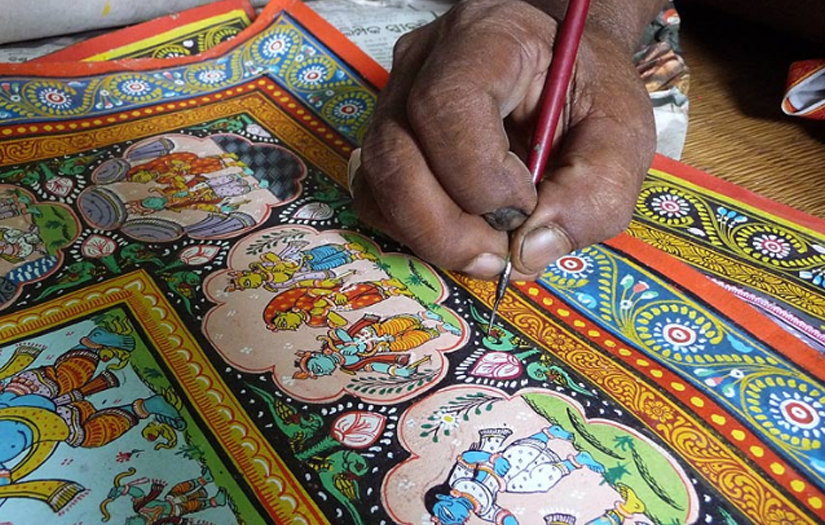
Pattachitra, an ancient art form of Odisha, is a unique and exquisite art that has been passed down through generations of artisans. The word “Patta” means cloth, and “Chitra” means painting, making Pattachitra a traditional form of cloth-based painting. This art form is one of the most revered and admired folk art traditions of eastern India and has its roots in the Jagannath cult, which is an integral part of the religious and cultural heritage of the state.
Pattachitra paintings are known for their vibrant colors, intricate details, and symbolic representations of Hindu mythology. The themes of the paintings are generally based on the Ramayana, Mahabharata, and the Puranas. The use of natural dyes and pigments, along with an indigenous process of preparation of the canvas, is what sets Pattachitra apart from other art forms. The use of colors like red, yellow, blue, and green is quite common in Pattachitra, and the paintings are often embellished with fine lines and intricate patterns.

The artists who create Pattachitra paintings are known as Chitrakars, and they belong to a specific community. They have been practicing this art form for generations and are highly skilled and talented. The traditional process of creating a Pattachitra painting involves preparing the canvas by coating it with a mixture of tamarind seed powder and water. After the canvas is prepared, the outline of the painting is drawn using a fine brush, and the colors are filled in with great care and attention to detail.
Pattachitra paintings are made using natural materials and pigments. The pigments are made from materials like turmeric, indigo, and vermilion. The process of creating these pigments is time-consuming and requires great skill and knowledge. The natural pigments used in Pattachitra paintings are eco-friendly and non-toxic, making them a safe choice for home decor.
Pattachitra paintings are not just beautiful works of art but also convey spiritual and philosophical messages. They serve as a medium for storytelling and communication of cultural heritage. The themes of the paintings are generally based on the lives of gods and goddesses, and they represent different phases of human life, such as birth, growth, love, and death.

In recent times, Pattachitra has gained popularity not just in India but also internationally. These paintings have been exhibited in museums, galleries, and cultural events worldwide. The government of Odisha has also taken initiatives to promote Pattachitra as a cultural heritage of the state. It has created a dedicated Pattachitra village in Raghurajpur, a small village in Puri district, where visitors can experience the art form firsthand and interact with the Chitrakars.
In conclusion, Pattachitra is a unique and ancient art form of Odisha that has been passed down through generations of artists. The intricate details, vibrant colors, and symbolic representation of Hindu mythology make it an exquisite art form that has gained global recognition. The government of Odisha’s initiatives to promote this art form will ensure that it continues to flourish and inspire generations to come. The secrets of Pattachitra are now uncovered for the world to see and appreciate.
